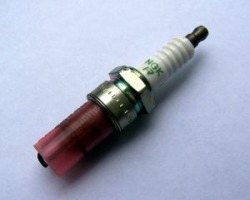Your Source For How To Change Spark Plugs
You can search Amazon to find all of the parts and tools that you will need to change spark plugs in your car. Amazon also carries a lot of automotive parts for most makes and types of vehicles, and they can ship the parts right to your home.
How to change your spark plugs in 10 easy steps
By doing your own minor car repairs, you will not only save money, but also have the satisfaction of working on your own car. By following these simple steps on how to change your spark plugs, you should be able to complete this in a fairly short time frame with minimal effort. Good luck!
1. Ensure that you have the repair manual for your specific vehicle
2. It is best to do this procedure when your car engine is cooled off, as the engine could be very hot
3. Before you consider installing the spark plug, consult your repair manual to determine the correct gap required and gap all of the new spark plugs accordingly – see tip #1 below
4. Remove just one spark plug wire from one spark plug by either pulling it off carefully or using a spark plug wirepuller. Do not pull off all of the wires at the same time as you will likely get them mixed up when trying to reinstall – Do one wire and spark plug at a time
5. Before actually removing the spark plug, ensure that there is no oil or debris around it that may fall into the spark plug hole
6. Remove the spark plug using the proper socket tools (usually a 13/16” or 5/8” deep socket) - turn counter clockwise to loosen. If the spark plug is recessed or hard to reach, you may need to use an extension or swivel tool
7. Now install the new spark plug by first turning it by hand to ensure you are not cross threading. Continue turning by hand until it is tight
8. Use the same socket wrench you used for removal to finish tightening up the new spark plug. Your repair or owners manual may stipulate how tight to install the plug, so you would have to now use a torque wrench to accurately tighten the spark plug to manufactures specs. If you do not have a torque wrench, tighten the spark plug to a snug fit using your standard socket wrench
9. Now, connect the spark plug wire onto your newly installed spark plug. Ensure that it is firmly pushed down onto the spark plug, usually you feel it snap into position
10. Repeat the above procedure for each of the spark plugs, doing just one at a time until all are completed. When you have completed replacing them all, recheck all the wires to make sure none have come loose again while you have been working. Start the engine to confirm it is now running smoothly
By following these simple steps in how to change spark plugs, you should now be able to replace the spark plugs in the most common types of vehicles.

Spark plug with protective cap on threads

Spark Plug Wire and Boot
Tips on how to change your spark plugs
Safety: Disconnect the negative terminal at your car battery before proceeding with doing any work on your car engine
Remember, do not work on the car engine while it is still hot as you can easily be burned. Also, there are many sharp edges in the engine compartment, so work very carefully and you may want to consider wearing a pair of mechanics gloves to protect your hands and knuckles
1. It is very important to do just one spark plug at a time, so that you do not get the spark plug wires mixed up. If you do get the wires mixed up, it can be a frustrating experience to sort out which wire goes where
2. It would be helpful to have a spark plug gaper even though the new plugs will say they are properly gapped. It is recommended that you check each plug before installation to ensure that in fact it has the correct gap as specified by the manufacturer
3. When removing the old spark plugs, take note of what cylinder they are some and note and discoloration or buildup on the spark plugs, as this can tell you a lot about how well your engine your engine is running.
4. Use a spark plug socket designed to spark plug removal (with internal gasket/rubber) instead of a conventional socket as they are designed to hold the spark plug in position inside of the socket while inserting or removing the spark plug. If you use a conventional socket, the spark plug may easily fall out and cause damage, possibly change the gap, or get dirt on the spark
To help you even more with your car maintenance, I was able to find this automotive troubleshooting site which might be able to save you some money, teaching you how to care for your car properly.
